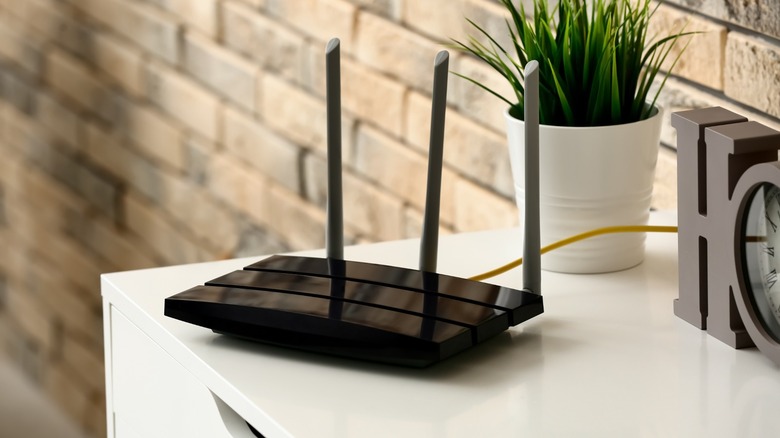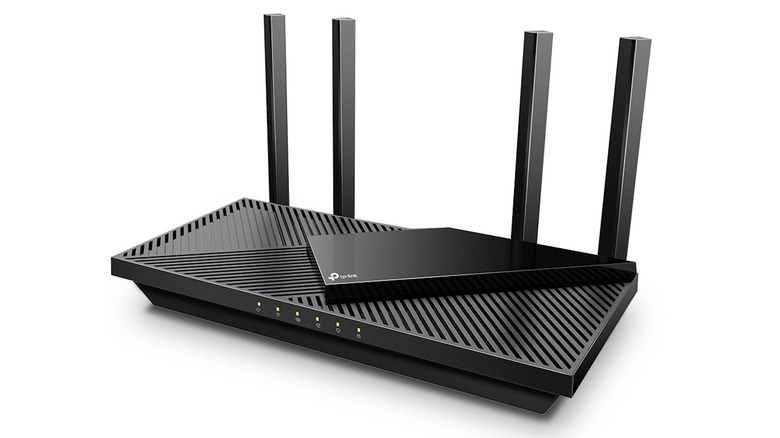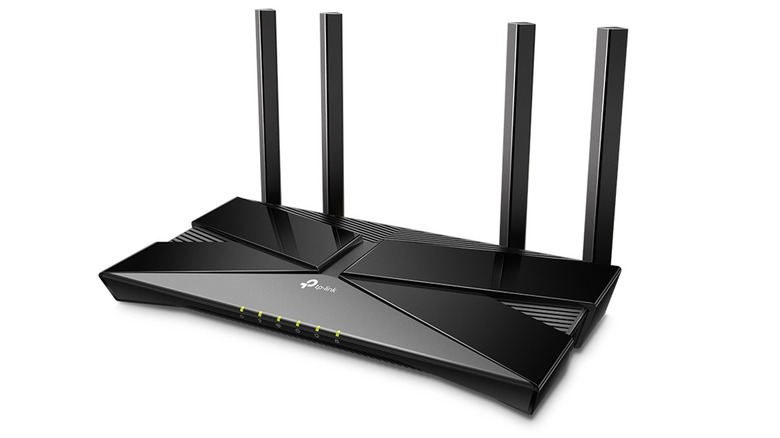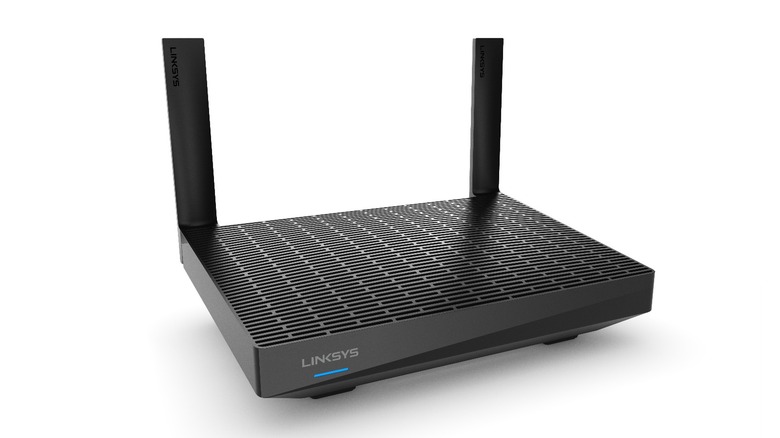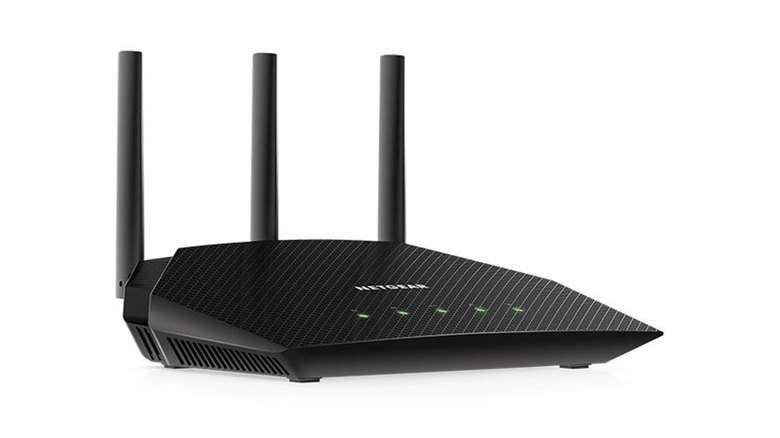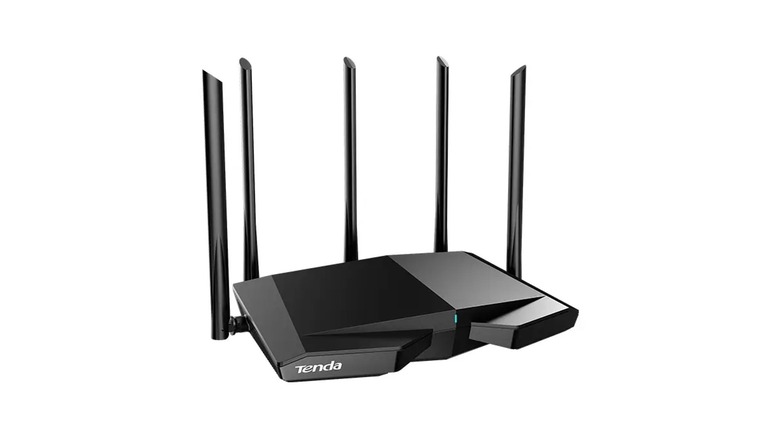5 Of The Best Wi-Fi Routers That Won't Break The Bank In 2024
For most people, what matters is a router's performance and price. With the many options in the market nowadays, it's hard to pick a router that resonates with our preferences fully. However, if you know what you're looking for, you can quickly land on options like TP-Link Archer AX21 and Linksys MR7350, which strike the perfect balance of cost and benefit.
When buying a router, there are only a few things you need to consider: dual-band (2.4 GHz and 5 GHz) or triple-band (2.4 GHz, 5 GHz, and 6 GHz) connectivity for a mix of speed and range, easy setup and management, and OFDMA and MU-MIMO support for multiple devices. Models with Wi-Fi 6 or newer standards perform better, and opting for them can also help you future-proof your router. Features like VPN and WPA3 encryption help you connect to the web while maintaining security.
Having outlined key buying considerations, here's a look at the best-reviewed budget routers in the market by brands like TP-Link, Linksys, Netgear, and Tenda. However, this list is not exhaustive — you may find routers better suited to your needs for a little more or a little less. While these routers are the best in their "budget router" category, higher-end routers offer more features and perform better.
TP-Link Archer AX21
TP-Link's Archer AX21 (AX1800) has the reputation of being the best budget router in the market. Coming in at only $100 on Amazon, you can set up this dual-band, Wi-Fi 6 router quickly using TP-Link's Tether app. It has a marketed speed of up to 1.8 Gbps, though it's split between both of its bands — 1,200 Mbps top speed from the 5 GHz band, and 574 Mbps from the 2.4 GHz band — as is the case for all routers. Still, the Archer AX21 performs impressively well.
In fact, as per CNET's testing, it outperformed the Netgear R6700AX and Asus RT-AX55 (both priced the same as AX21) in terms of speed and latency — 20ms — which is excellent for streaming and gaming. Its OFDMA feature ensures faster internet and less waiting when many devices are connected to it. For protection against brute-force attacks, it has WPA3 security as well. The best part is that it is compatible with TP-Link's OneMesh products, so you can add extenders to increase Wi-Fi range.
In terms of connectivity, along with four beamforming antennas for improved signal strength, it has four LAN ports for wired connections and one WAN port for the internet source. However, some refurbished AX21 models available on Amazon for $75 may also come with a USB 2.0 port.
If you want to balance cost and benefit, the AX21 is your best bet. It also often gets a $15-$20 discount, so there are good chances of you getting it under $100.
TP-Link Archer AX10
The Archer AX10 can be considered the younger brother of the Archer AX21. It's an AX1500 router — meaning it is dual-band and supports Wi-Fi 6 — that retails for $80, but is often on sale with $10-20 discounts on Amazon.
According to TP-Link, AX10's 5 GHz band offers speeds up to 1,200 Mbps — whereas the 2.4 GHz one offers 300 Mbps. Although PC Magazine mentioned in its review that its 5 GHz game is strong and 2.4 GHz could've been better, the AX10 generally has thousands of satisfied buyers. From streaming, to gaming, to casual browsing performance, buyers mostly do find the value they're looking for with this router.
Specs-wise, the AX10 has a 1.5 GHz triple-core processor, OFDMA and MU-MIMO technology, and four high-gain beamforming antennas, making for an overall excellent range and communication for connected devices. Similar to AX21, it has four LAN ports and one WAN port, but no USB. Still, the Archer AX10 is highly praised for its ease of use. Thanks to TP-Link's Tether app, the setup process is straightforward, and the firmware is simple enough to understand for everyday users.
Although an entry-level Wi-Fi 6 router, the AX10 provides decent speeds and reliable connectivity at a very competitive price point of $80, with average discounts of $10-20.
Linksys MR7350
A router that gives Archer AX21 some tough competition is the Linksys MR7350. This $100 router from Amazon has a coverage area of 1,500 square feet and its beamforming technology supports over 20 devices at the same time.
The MR7350 is quite similar to the AX21 in terms of tech. It is an AX1800 router equipped with technologies like OFDMA, MU-MIMO, and WPA3 encryption. On Amazon, it's one of the best-selling dual-band Wi-Fi 6 routers, claiming a speed of up to 1.8 Gbps summed up for both bands. For connectivity, it has four LAN ports, one USB 3.0 port, and a WAN port. A 1.2 GHz quad-core processor, 512 MB RAM, and 246 MB memory powers its firmware. Just like AX21, it is compatible with Linksys' Intelligent Mesh Technology, so you can add more routers to create a mesh network, too.
The MR3750 does lag behind the AX21 when it comes to the number of antennas (two compared to four), CPU speed (1.2 GHz compared to 1.5 GHz), compactness, and yes, performance. Tom's Guide noted that the MR7350 "proved to be a reliable router for general household Internet access, although its output sometimes varied," and only disappointed when it came to transferring data.
Regardless, the Linksys MR7350 provides most of the standard Wi-Fi 6 router features. It doesn't break the bank and is popular with buyers — around 55,000 purchases on Amazon.
Netgear R6700AX
Yet another budget AX1800 router that your wallet would love is Netgear R6700AXS. With a range spanning 1,500 square feet, this router costs $100 on Amazon — often at a $10-20 discount — and works great for gaming and streaming.
Similar to the AX10, the R6700AXS also has a 1.5 GHz quad-core processor, four Gigabit LAN ports, and one WAN port. However, it supports speeds up to 1.8 Gbps across both its bands (2.4 GHz and 5 GHz), compared to the 1.5 Gbps of the AX10. Along with built-in security features like WPA3 and VPN, this router goes beyond with a free one-year Netgear Armor subscription that typically costs around $100. Netgear Armor helps protect your network and connected devices against cyber threats through its antivirus and anti-theft features.
Although the parental control features require a pricey subscription, you do get a 30-day free trial upon purchase. Whether you use that feature or not, the R6700AX is still stocked with enough value to make it a bang for your buck. For example, CNET reviewed this router to have latency around 20ms, which falls within the ideal range for gaming, so this might be the budget router to get for online gaming primarily.
All-in-all, the R6700AX is a decent AX1800 router. It has all the standard Wi-Fi 6 technologies like OFDMA, MU-MIMO, and beamforming, and thousands of satisfactory buyer reviews. If you need anything more, your budget may have to go up a bit.
Tenda RX27 Pro (AXE5700)
Although Tenda RX27 Pro costs around $200 on Amazon, you can easily get it for about $160 on sale. This price tag sure is on the edge of being affordable, but the feature-packed RX27 Pro justifies it for the most part.
It offers speeds up to 5,665 Mbps, split between three bands: 861 Mbps for 2.4 GHz, 2,402 Mbps for 5 GHz, and 2,402 Mbps for 6 GHz. Equipped with a 1.7 GHz quad-core CPU, OFDMA, and MU-MIMO features, buyers review the RX27 as having highly stable Wi-Fi connectivity and range for multiple devices. Its five 6dBi high-gain antennas give it optimal range, despite low-key looking like Towers of Sauron.
The RX27 does have a regular WAN port and three Gigabit LAN ports. However, a couple of catches here are its lack of USB port, and its inability to top 1,000 Mbps — even with the 6 GHz band. Still, it's nothing short of features like built-in VPN and guest network setups that enhance security and offer a better experience.
Tom's Hardware praised RX27 Pro's 5 GHz and 2.4 GHz performance, along with the low latency of its 6 GHz band, which is excellent for gaming. The review pointed out that the RX27 Pro is best suited to those looking for an excellent Wi-Fi 6 with a bonus 6 GHz band. However, those wanting to buy Wi-Fi 6E routers should consider raising their budgets for better routers.
